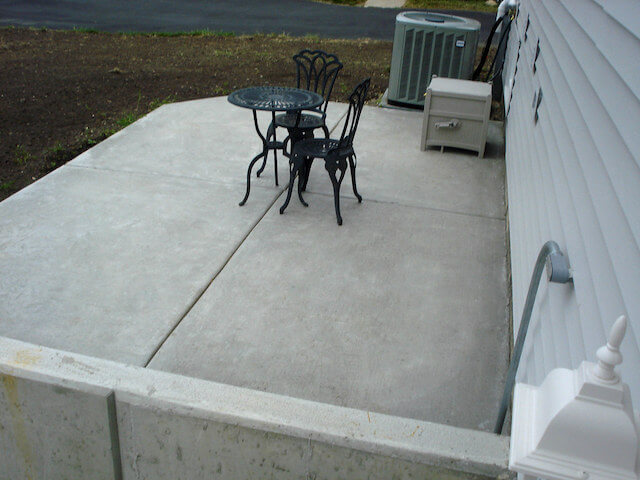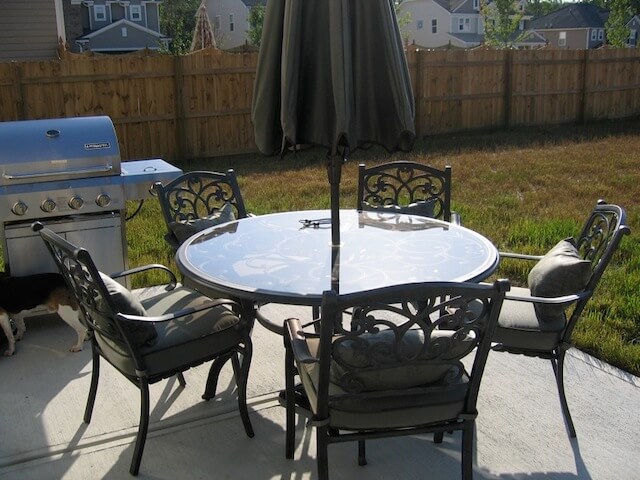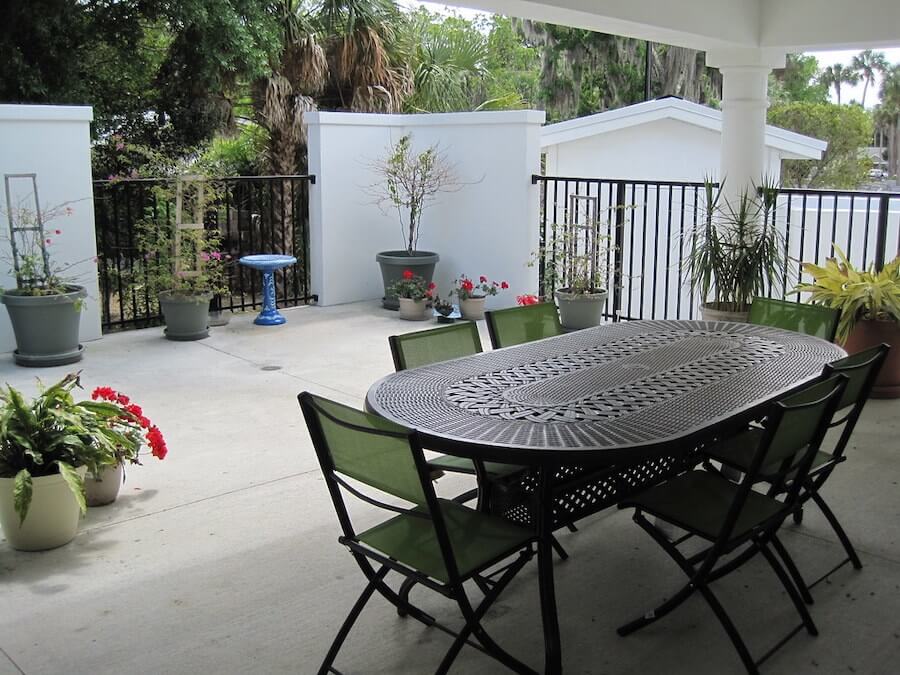Regarding outdoor and indoor flooring, porcelain tiles have made a name for themselves as a strong and sturdy building material.
However, since they are brand-new types, there are still a lot of unsolved concerns about how to install and maintain porcelain pavement.
Do you need to seal a porcelain patio? If you want to address this question, you’ve landed on the right site!
Let’s scroll down this article to get the answer!
Table of Contents
Do You Need To Seal A Porcelain Patio?
It is not essential to seal a porcelain patio! This material is hard-wearing, fading, or scratching.
Porcelain tiles feature low porosity (below 0.05%), which gives them more extended longevity and is perfect for your outdoor patio.
Ceramic tiles and porcelain are both burnt in the kilns, but the temperature at which porcelain is kilned is a significant distinction.
It causes the porcelain to become vitrified. Due to vitrification, the porcelain tiles are left with exceptional resilience and very little porosity.
Low porosity denotes a composition with little opportunity for substances, including moisture, to permeate.
Due to its non-porous nature, it won’t absorb moisture or stains, making cleanup a breeze.
However, if you still decide to seal your porcelain patio, let’s weigh the advantages and drawbacks first.
Pros Of Sealing A Porcelain Patio
1. It Improves Appearance.
Depending on the sealant’s finish, applying a sealer to your patio gives it a fresh, moist appearance and a glossy surface.
It won’t change the patio’s color; instead, it will bring out the substance’s color and make your patio glow.
Additionally, the pigment will seem brand-new since sealers shield against Ultraviolet radiation, which may fade colors.
2. It Provides Protection.
While it’s a non-porous material, it will be simpler to wipe away dirt, oil, and grime after applying a sealer.
Additionally, sealants provide extra moisture resistance. The sealer penetrates the cracks and gaps in the tiles to stop rainwater from settling.
3. It Enhances Drainage Surrounding Your Installation.
Applying a sealant on the surface will create a layer that prevents water from getting to the base and improves run-off from moisture.

Cons Of Sealing A Porcelain Patio
1. It Requires Regular Maintenance.
If you select a thinner sealer that begins to degrade and form a coating gradually, you will need to reseal your pavements often after they have been first sealed.
Depending on your patio’s substance and the sealer’s brand, you may need to reseal it frequently.
2. Sealant Isn’t Cheap.
It’s crucial to pick a high-quality sealant immediately because doing so will help the final finish last longer.
Inexpensive sealers tend to be thinner and lose effectiveness more quickly than high-quality sealers.
Besides, after the first time of sealing, you will need to reseal your patio. Thus, every time you perform maintenance, there is an initial fee plus an ongoing cost.
3. Nearby Plants May Become Contaminated By The Sealant.
It’s crucial to choose a dry day with little wind while applying sealer or sealant overspray, as these things can cause harm to nearby plants.
Depending on how close those plants are to the newly sealed pavers, you might wish to cover them with plastic sheeting to defend them better.
During the sealing procedure, you should also put on a mask, safety goggles, shoe coverings, long pants, and long sleeves.
Furthermore, ensure that you apply sealer in a well-ventilated space. Also, take the necessary measures to prevent breathing in the fumes.

How Do You Know If Your Porcelain Patio Needs Sealing?
The type of porcelain tiles will determine whether you need to reseal your patio or not.
Porcelain tiles include two main kinds: unglazed and glazed. Let’s look through both of them!
Except for one extra step, the manufacturing processes for unglazed and glazed porcelain tiles are nearly identical.
These porcelain tiles are produced by compressing silica, clay, and other components at high temperatures.
Porcelain has more water resistance than other materials because of this compression.
Some types include an extra glass layer. Glazed tiles don’t require sealing because of the protective coating of glass that shields them from stains.
Because glazed tiles are often a little thinner than unglazed types, they are lighter and frequently less expensive to produce and install.
On the other hand, since unglazed types lack the upper surface of the glass, they are more anti-slip, making them perfect for high-traffic areas.
Since glazed tiles have an additional layer of protection, they are less prone to be completely colored.
Unglazed types are crucial if they wear; any scratches and cracks are less evident because the layer beneath resembles the surface.
Unglazed tiles have a rougher, more natural appearance similar to stone tiles due to their less polished surface, making them perfect for patios.
Glazed pavers do not require sealing, but it is not harmful if you do so. If your patio is in a high moisture place, it’s a good idea to reseal the grout to stop mold from growing there.
On the other hand, if you prefer to stop specific unglazed tiles from being stained or holding dirt, it’s best to seal them.

How To Seal A Porcelain Patio
If you decide to seal your porcelain patio, here are step-by-step instructions to make your task easier:
Step 1: Clean Porcelain Tiles and Grout
Before applying the sealer, it is essential to clean the porcelain flooring and grout thoroughly.
The tile may become permanently stained and dirty if you skip this step.
Different porcelain tile types require other cleaning techniques. However, they all typically follow the same procedure:
- Sweep or vacuum to remove any loose dirt.
- Use a suitable cleaning solution to wash the spots.
- Rinse off that solution
- Give them time to dry
You can create a reliable porcelain tile mild detergent at home—mix two water gallons with ¼ cup of vinegar.
Otherwise, you can use multi-purpose cleaners for other floors or countertops.
Nevertheless, if the tiles are relatively stained, you may want to use a heavy-duty product.
Be careful when choosing the solutions for your flooring, as a harsh chemical like ammonia or acid will permanently damage the patio if it’s polished or glazed.
Several cleaning solutions have an applicator or scrub to make it easier to perform on badly stained spots of your patio.
A mop can work perfectly if you use only water and vinegar. Also, it’s a great idea to spend time washing the nearby grout.
The good news is most cleaning solutions, and sealers work effectively on grout and porcelain tiles.
Make careful to rinse the tiles after cleaning or scrubbing them, and then wait for the grout and porcelain to dry.
If there is any extra water, think about sweeping it up or wiping it away to hasten to dry and minimize any potential water damage.

Step 2: Apply The Sealer
After cleaning the flooring and grout, you should apply the sealer. To distribute the sealant, use a cloth or brush from home.
Besides, you can use an applicator to ensure your sealant application is level and minimize mess.
Instead of putting the sealant straight over the pavement while applying it, pour a portion into a small container.
You may use a tray or cup for this container, but ensure your cloth or applicator fits inside.
Working in small regions is the key to applying the sealer. As with a cleaner, you shouldn’t use too much at once.
Take turns applying sealer on the pavement. If the tiles are much smaller, you can perform sealing a few at the same time.
After thoroughly inspecting a space, wait at most five minutes for it to settle.

Step 3: Remove Residual Sealant
Use a soft, dry towel to remove any remaining sealer from the flooring and grout after letting the sealant set for a couple of minutes.
Depending on the quality and type of the sealant, your tiles may get sticky when you leave them sitting too long.
If that’s the case, use a bit more sealer. After that, remove any leftovers on the pavement.

Step 4: Wait Until It’s Dry
Before stepping on your porcelain patio or utilizing the region, you must wait for roughly an hour.
The regular usage of tiles in a high-traffic location may cause a few effects of a new sealant to wear off or embed fresh debris into it.

The Bottom Line
This article has ultimately reached the bottom of the commonly asked question: Do you need to seal a porcelain patio?
Thanks to its non-porous characteristics, this material will not absorb moisture or stains, making maintenance a breeze.
Nevertheless, if you still want to add an extra protection layer to your patio, you can still apply the sealer.
Hopefully, you will succeed in your DIY project with our helpful guides. Thanks for reading, and see you in the next post!

